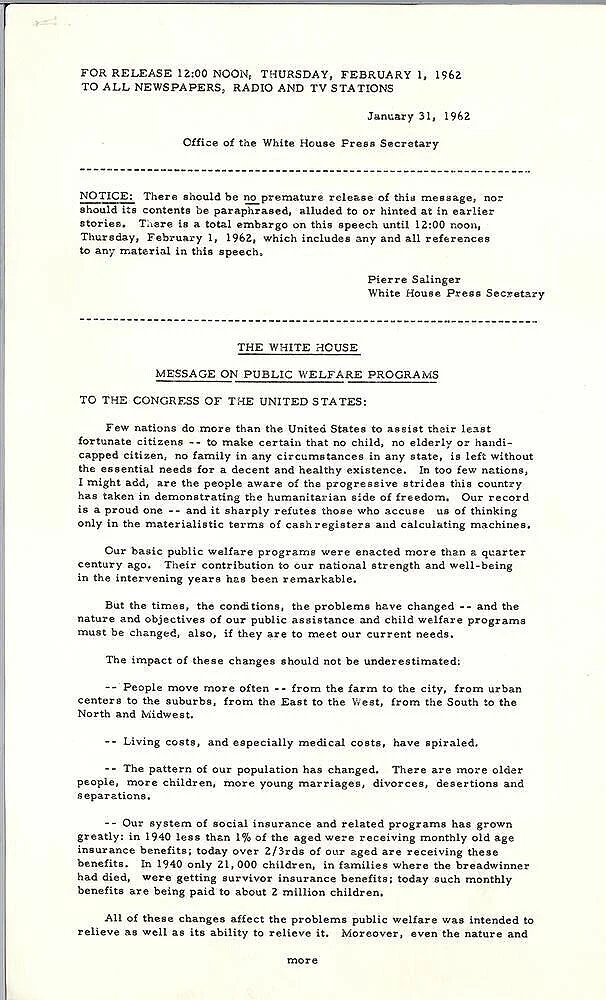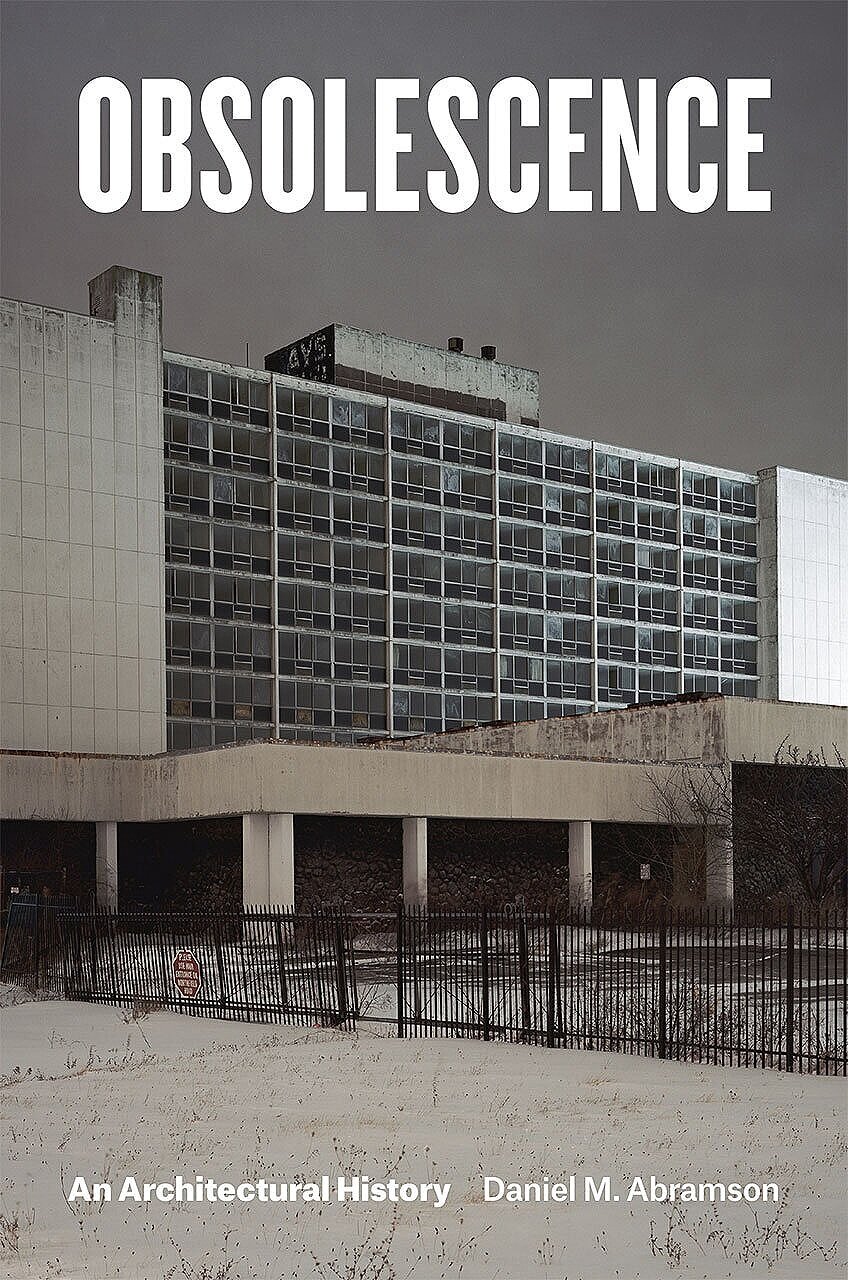The lead image from Daniel M. Abramson’s article, showing key players in the creation of the Boston Government Service Center. In the foreground is a model of the complex, with the Hurley Building closest to the front of the picture (the model also includes the unbuilt office tower.) In the background can be seen architectural drawings of the complex: an elevation and numerous floor plans. Daniel Abramson identifies the members of the group as (left-to-right): Nathaniel Becker, Dick Thissen, Charles Gibbons, Joseph P. Richardson, Edward Logue, Jeremiah Sundell, Unidentified (George Berlow or William Pedersen?)—and Paul Rudolph at the far right.
A Government’s choice to engage: The Welfare State - and its architecture
President Reagan famously said that "Government is not the solution to our problem, government is the problem."—a position that’s been debated, spurned, or clasped ever since it was pronounced at his inauguration.
Yet the opposite tenet—that government can be a positive force for good, helping and uplifting people’s lives, and working to cure the ills of society—has also been embraced by the government and its citizens, and has been a prominent context of American life since the advent of President Roosevelt’s New Deal programs, which were created in the 1930’s in response to profound suffering brought on by the Great Depression.
Over the decades since, how (and whom, and how much) to help—the very shape and goals of the US “welfare state”—has undergone several transformations, and is still being contested.
The opening page of the January 1962 press release which outlined President Kennedy’s message to congress on Public Welfare Programs. The complete document can be seen on the website of the John F. Kennedy Presidential Library and Museum.
A new article, Representing the American Welfare State, by architectural historian Daniel M. Abramson, points out that there was a mid-20th Century shift in the way that government thought of (and administered) such aid, with “. . . .U.S. welfare system . . . . policy emphases on training, education, and skills, to provide not just a ‘relief check,’ as President John F. Kennedy told Congress in 1962, but ‘positive services . . . to help our less fortunate citizens help themselves.’”
To manage that—
“. . . . In the postwar period . . . . Republicans and Democrats alike, pushed strongly for greater integration and standardization to make more efficient and equalize benefits across the growing apparatus, which, in the Cold War context, was meant to embody capitalist democracy’s superiority over communism. . . .”
The Washington, D.C. headquarters of the Department of Health and Human Services (the Hubert H. Humphrey Building). It was designed by Marcel Breuer, and dedicated in 1977—but its planning goes back to the mid-60’s, during the era when government services to citizens began expand in their scope and reach. Photo courtesy of Sarah Stierch (CC BY 4.0)
Throughout the country such standardization, centralization (and increasing range and volume of services) had architectural consequences: new buildings were planned and built to accommodate those services (and the organizational structures needed to administer them.) Places where this is solidly manifest are Washington DC’s headquarters building for the Department of Health and Human Services—and in Massachusetts in the Boston Government Service Center.
Abramson notes that—
“The first call for a consolidated Massachusetts State Service Center appeared in [a] 1960 state-commissioned office-facilities study, which recommended that agencies dispersed across more than twenty rented and state-owned buildings in Boston be relocated to a single site.”
The article points out the situation’s inherent tensions and contradictions:
“. . . . architectural design aside, the Massachusetts State Service Center’s very name expresses the dialectic of the American welfare system. . . . : between, on the one hand, decentralized administration (“Massachusetts State”) and, on the other, the postwar drive toward integration (“Center”).”
and a central, tension-filled issue for policy-makers and citizens:
“American welfare state’s policy to promote individual agency and responsibility. But this individuated subjectification does not fundamentally alter the overall systemic structures, be they the State Service Center’s dominant impersonal production and design, the welfare state’s bureaucracy. . . .”
The article—which is infused with (and shares) the author’s research on the building’s history—explores these built-in oppositions, particularly as manifest in the design and use of the Boston Government Service Center. Abramson asks questions that go to the heart of what buildings can (and cannot) do and mean—or resolve. He poses the possibility that such explorations of the intersection of architecture and policy can usefully function as a vehicle for evaluating the larger issues of the relationship of the citizen and the state:
“. . . . for the American welfare state, the Massachusetts State Service Center’s architecture allegorizes what has been a much more convoluted and contentious intercalation of individuation and integration.
Matters of representation connect finally to the question of welfare states’ futures. Today, social and economic inequality is frequently connected to weakened welfare states, a product of decades of neo-liberal privatization and austerity, as well as antagonistic cultural representations. But might different representations of the American welfare state—including its architecture—facilitate more nuanced views of the system’s history and promote positive outlooks toward its future? An architectural history of the Massachusetts State Service Center that is not simplistically about Rudolph or brutalism but instead sees the building as enacting and participating in the American welfare state’s historical complexities and subjectivities might, at one level, help guide state officials in their ongoing stewardship.”
Dr. Abramson’s article is rich with such insights, and he examines these issues—architectural and social—in-depth. Below are several spreads from the article:
The initial pages of the article—Representing the American Welfare State— opens with a photo of of the team which brought forth the Boston Government Service Center complex (see enlarged version, of this photo and caption, at the beginning of this post.) Paul Rudolph is standing at the far right.
The above spread includes photos of the Boston Government Service Center’s exteriors. The Hurley Building—the portion of the complex that is currently under threat—is included in all the views.
The author did exhaustive research on the history of the project, and two of the most intriguing images are shown in the above pages from the article.
At the upper-right is I.M. Pei & Associate’s early site plan, showing government services housed in three distinct and un-connected buildings.
At the middle-right is shown another approach that was subsequently submitted for consideration: in the upper-left of the image can be seen the approximately triangular-shaped site of the complex, which is occupied by three irregularly shaped buildings—and those buildings attempt to relate to each other, forming a courtyard. This was proposed by Pederson and Tilney. Like Pei’s plan, this design was rejected—but the firm of Pederson and Tilney remained as members of the architectural team.
The Author: Daniel M. Abramson
Daniel M. Abramson, Ph.D.—professor in Boston University’s History of Art & Architecture Department, where he is Director of Architectural Studies—is one of the most distinguished architectural historians working today. His research focuses upon matters of economics, society, and architecture from the 18th through 20th centuries, with a focus on British and American subjects.
A prolific author of papers, books, articles, chapters, entries, and reviews, he is also active on numerous professional & academic committees and organizations, and has been the recipient of a wide array of grants, honors, and fellowships.
Below are several of Dr. Daniel M. Abramson’s books: Skyscraper Rivals: The AIG Building and the Architecture of Wall Street, Obsolescence: An Architectural History. and Building the Bank of England: Money, Architecture, Society 1694-1942 — and we note all of these with great interest, for the subjects of each are tangent to the work of Paul Rudolph: he was a skyscraper architect; his buildings have been challenged by charges of obsolescence; and the layered, spatial richness of Rudolph’s spaces have been compared to the work of John Soane (the architect of the Bank of England.)
To read the article
The article has been published in Grey Room—a peer-reviewed journal from MIT Press, which “brings together scholarly and theoretical articles from the fields of architecture, art, media, and politics to forge a cross-disciplinary discourse uniquely relevant to contemporary concerns.”. The article is in their most current issue: number 78 (Winter 2020)
Dr. Abramson has graciously allowed us to put the entire article on the Paul Rudolph Heritage Foundation’s website:
It is on the project page which focuses on Rudolph’s Boston Government Service Center—and you can access the article HERE.










